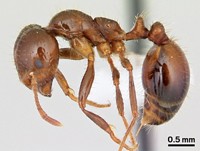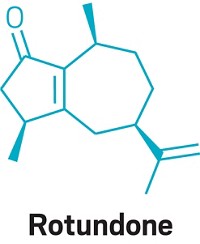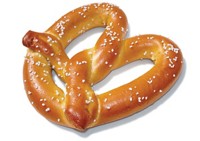Advertisement
Grab your lab coat. Let's get started
Welcome!
Welcome!
Create an account below to get 6 C&EN articles per month, receive newsletters and more - all free.
It seems this is your first time logging in online. Please enter the following information to continue.
As an ACS member you automatically get access to this site. All we need is few more details to create your reading experience.
Not you? Sign in with a different account.
Not you? Sign in with a different account.
ERROR 1
ERROR 1
ERROR 2
ERROR 2
ERROR 2
ERROR 2
ERROR 2
Password and Confirm password must match.
If you have an ACS member number, please enter it here so we can link this account to your membership. (optional)
ERROR 2
ACS values your privacy. By submitting your information, you are gaining access to C&EN and subscribing to our weekly newsletter. We use the information you provide to make your reading experience better, and we will never sell your data to third party members.
Environment
Newscripts
Smart Dressing, Chocolate Geography, Beer-loving Mosquitoes
by Rachel Sheremeta Pepling
March 15, 2010
| A version of this story appeared in
Volume 88, Issue 11

Recent snowstorms and other travel-unfriendly weather have left many of us a tad stir-crazy this winter. But this week, readers can get out physically to enjoy St. Patrick's Day and travel virtually with a globe-trotting edition of Newscripts.
First up is Venice, the Italian city known for its canals, gondolas, and fate of becoming the next Atlantis. The U.K.'s Daily Telegraph included a brief story on Feb. 24 about a tactic that could help prevent the city's submersion into the lagoon upon which it is built. Members of the Future Venice project—a collaborative effort that aims to find creative solutions to the city's sinking problem—are developing a new technology called protocells, affectionately known to researchers as "SMART SALAD DRESSING."
Protocells are programmable oil droplets designed by Martin Hanczyc, an associate professor in the department of physics and chemistry at the University of Southern Denmark, and Neil Spiller and Rachel Armstrong of Bartlett School of Architecture at University College London. The researchers are working to chemically engineer a protocell that will capture carbon dioxide and then produce pearls of solid carbonate. These pearls are the building blocks of a theoretical artificial limestone reef that would fortify or replace the woodpile foundations the city now sits upon.
As the woodpiles sink into the silt underneath Venice, so do the city's stone buildings. Carbonate deposits left by the protocells at the bases of the piles could help stave off further sinking. The researchers believe the protocells could also be engineered to prefer shady areas to sunlit ones so that when they are released into the canals, they will head for the darkened areas of building foundations rather than fill the sunny canals.
The protocell technology is currently in the experimental stage and will likely not be useful for another three to five years, the Daily Telegraph reports. Hanczyc, Spiller, and Armstrong see smart salad dressing as a sustainable alternative to the less environmentally friendly plan B—a floodgate system.
Venice might be famous for its water, but other areas of the world pride themselves on their CHOCOLATE. Purists and industrialists, rejoice; chocolate cheaters, beware. The data-driven field of chemometrics has come to the rescue for determining a chocolate's geographical origin in order to prevent fraud.

Soil, climate, culture, and cacao-pod maturity can all affect the aromatic characteristics, and hence the quality, of chocolate. By analyzing the volatile compounds of various chocolates, French researchers were able to statistically determine the origin of the cocoa used in each sample (J. Agric. Food Chem., DOI: 10.1021/jf903471e). They characterized chocolate by four main places of origin: the Caribbean, Madagascar, West Africa, and South America.
The study's authors also identified seven compounds that act as chemical tracers. Chocolates from Africa can be characterized by benzaldehyde, linalool, and phenylacetaldehyde. These compounds are responsible for the hazelnut/almond, floral, and honey aromas of African chocolate, respectively. Two aldehydes, 2-phenyl-2-butenal and 4-methyl-2-phenyl-2-pentenal, are signatures of Madagascar chocolates, and (E,E)-2,4-nonadienal and (E,E)-2,4-decadienal mark Caribbean chocolates.

Finally, should you be inclined to down a pint on St. Patty's Day, try to avoid doing so in regions prone to malaria. Opt for Ireland over a West African country such as Burkina Faso. A recent study published in PLoS One finds that people who consume BEER are far more appealing to malaria-bearing mosquitoes than those who drink water (DOI: 10.1371/journal.pone.0009546). The authors of the study believe that alcohol metabolism increases the breath and odor markers that attract mosquitoes. Sláinte!





Join the conversation
Contact the reporter
Submit a Letter to the Editor for publication
Engage with us on Twitter